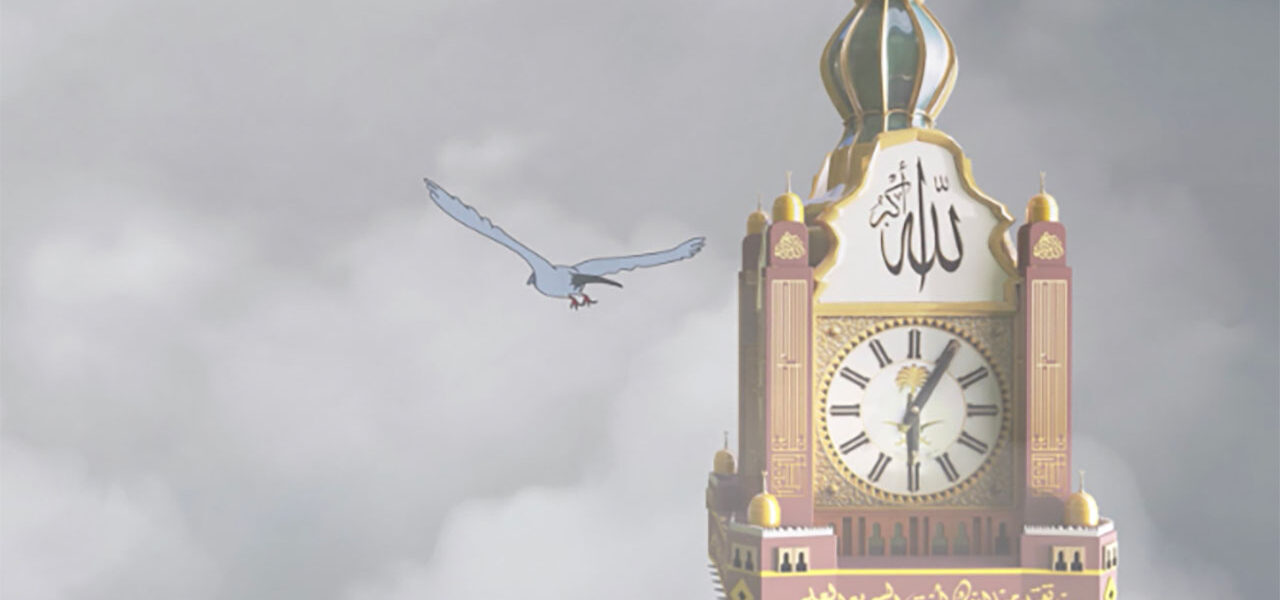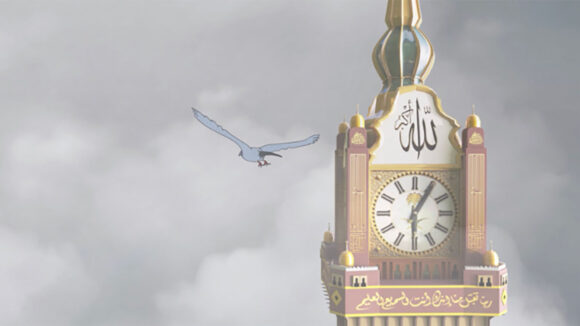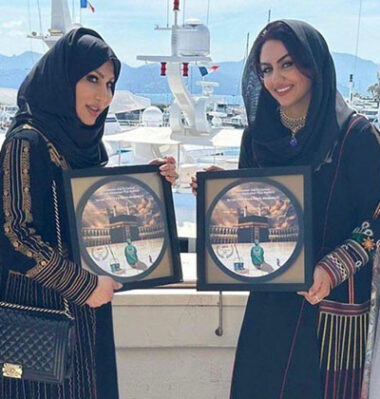

2025 Oscars Short Film Contenders: ‘Prostrate and Draw Near’ Directors Suraya AlShehry And Nabila Abuljadayel
Cartoon Brew is putting the spotlight on animated short films that have qualified for the 2025 Oscars.
In this installment, we’re looking at Prostrate and Draw Near from Saudi Arabian directors Suraya AlShehry and Nabila Abuljadayel. The short earned its Oscars qualification through theatrical exhibition.

Based on true events, Prostrate and Draw Near portrays a unique spiritual moment in an almost empty Holy Mosque of Makkah during the COVID-19 lockdown, inspired by Nabila Abuljadayel’s original artwork. Directed, produced, and written by the mother-daughter team of Suraya AlShehry and Nabila Abuljadayel, the film is a testament to this very particular moment in history. The film is produced by the duo’s company Suraya Productions.
Cartoon Brew: It is not often heard that a mother and daughter collaborate on an animated film. Describe this collaboration and how did that impact your relationship?

Suraya AlShehry and Nabila Abuljadayel: For my mother and I, it felt like a natural extension of what we’ve always done together. My mother is a writer, and throughout my childhood, her library was a central part of my and my siblings’ lives. We would spend hours discussing every book she added to her collection, reflecting on what we learned and how it connected to the world around us. Those discussions, along with our shared love of art, films, and history, shaped my upbringing. My mother always created an environment where my siblings and I felt that our thoughts and ideas were valid, and she constantly shared her writings with us, encouraging us to think critically and creatively. So, when it came time to collaborate on this film, it didn’t feel strange at all. For years, my mother had cultivated an atmosphere where I was free to explore my creativity independently. Working together on this project gave us the opportunity to merge our talents and perspectives. It was a beautiful way to strengthen our bond and a reminder of how much we’ve influenced each other’s artistic journeys over the years.
What was it about this story or concept that connected with you and compelled you to direct the film?
The response to my original artwork was overwhelming, resonating deeply with people of all faiths across the globe. Its universal message of shared humanity and unity during a time of crisis touched the hearts of viewers worldwide. The unexpected recognition of the artwork inspired my mother and me to expand it into a short animated film. Working closely with a dedicated team, we crafted a story that deepened the emotional resonance of the original artwork.
To further enrich the narrative, the original heartfelt verses that were written for the film, explore the inner thoughts of the Grand Mosque cleaner. These verses were performed a cappella by The Amsterdam Andalusian Orchestra, in their voices conveying the story’s message with unparalleled authenticity and depth. The absence of musical instruments added a unique layer to the film, heightening its emotional impact and amplifying the film’s central themes with clarity and power. Throughout the history of cinema, there has been a noticeable scarcity in films addressing the subject matter of Makkah and the Holy Mosque of Makkah. This is especially true of animation. It therefore brings us great joy and a sense of deep fulfillment to have had the opportunity to collaborate together. The project took almost two years to complete, as many of the people working on the film were affected by the coronavirus.
What did you learn through the experience of making this film, either production-wise, filmmaking-wise, creatively, or about the subject matter?
Collaborating as a mother-daughter team has been the greatest accolade of all. It has been a deeply enriching experience, strengthening both our bond and the creative process. Above all, I discovered that what matters most is creating art that makes a difference, art that resonates, inspires, and leaves a lasting impact. In a world that often overlooks the smaller, everyday roles, I’ve come to realize that the true heart of any community lies in the hands of those who serve quietly, without recognition. Exploring the inner life of the Holy Mosque cleaner deepened my appreciation for these unsung heroes who, though often unnoticed, serve with humility and dedication. This journey reinforced the core message of equality and dignity; that every role, no matter how modest, carries profound significance. It also reminded me of our shared human experience of seeking connection, especially during times of crisis.
Can you describe how you developed your visual approach to the film, why you settled on this style/technique, and how this shaped the final work?
I developed the visual approach for this film by combining two art forms: traditional painting and 2d animation. Since the film is rooted in the original artwork I created, it was important for me to stay as true as possible to the style and essence of my artwork. 2d animation felt like the best medium because it evokes a sense of nostalgia and carries the warmth of a human touch, both of which enhance the emotional depth of the film. This approach aligns seamlessly with the film’s message, emphasizing humanity and timeless values.
